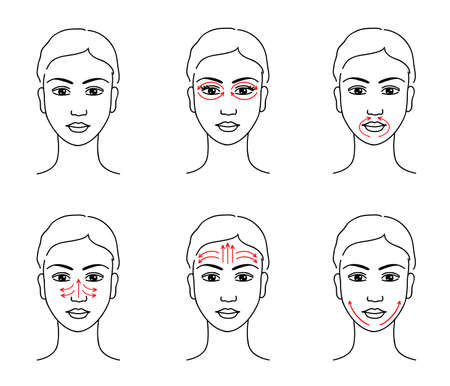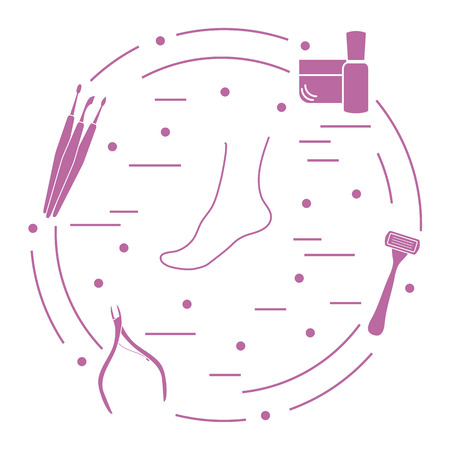Introduction: The Primer vs. Foundation Debate
Walk into any American beauty retailer or scroll through makeup tutorials online, and you’ll notice one product that’s earned a permanent spot in countless routines: primer. Originally introduced as a backstage secret to help makeup last longer under harsh lights, primer is now considered by many as a must-have first step before foundation application. But do you really need it, or is it just another marketing hype? In the U.S., the debate between using primer versus relying solely on foundation is ongoing. Some claim primer transforms their skin texture and keeps their look fresh all day, while others see it as unnecessary. This article explores why primer has become such a staple in American makeup culture, how it’s positioned in relation to foundation, and whether its benefits stand up to the hype or fall flat in real-world use.
2. What Does Primer Actually Do?
When it comes to makeup, primer is often marketed as a magic solution promising smoother skin, longer-lasting foundation, and flawless results. But what’s the real story behind this product? Let’s break down the technical role of primer in your makeup routine and separate the hype from genuine benefits.
Primer: Technical Purpose vs. Marketing Claims
| Marketing Claim | Technical Reality |
|---|---|
| Smooths out skin texture instantly | Most primers use silicones (like dimethicone) to fill in fine lines and pores temporarily, creating a smoother surface for foundation application. |
| Makes makeup last all day | Primers can help foundation adhere better by creating a barrier between skin’s natural oils and your base makeup. However, longevity still heavily depends on your skin type, prep routine, and environmental factors. |
| Minimizes pores permanently | No topical primer can shrink pores long-term; they only blur their appearance while worn. |
| Hydrates or mattifies instantly | Hydrating primers add moisture with ingredients like glycerin or hyaluronic acid; mattifying versions absorb excess oil with silica or clay. Results are temporary and work best when matched to your specific skin needs. |
The Science Behind Primer Performance
Primers are essentially cosmetic “middlemen.” Their formulas usually contain film-formers, emollients, and sometimes skin-care actives. The primary function is to create an even canvas so that foundation applies more smoothly and resists breakdown from sweat or oil. However, not all primers perform equally—some may actually cause pilling or separation if they aren’t compatible with your skincare or foundation formulas.
Real-Life Application vs. Expectations
If you have oily skin, a mattifying primer might help reduce shine for a few hours but won’t eliminate oil production completely. For dry or textured skin, hydrating or blurring primers can temporarily improve how foundation sits, but won’t replace good skincare habits.
Bottom Line: Is Primer Essential?
The effectiveness of primer varies based on individual skin type, climate, and the products you pair it with. While it can boost the performance of your foundation under certain circumstances, don’t expect it to be a universal fix for every complexion concern or makeup woe.

3. Common Myths About Primer and Foundation
When it comes to primer and foundation, there’s a lot of misinformation floating around in the beauty world—especially online. Let’s clear up some of the most common myths with straightforward, real-life examples.
Myth 1: “Primer is a must for everyone”
This is probably the most widespread misconception. While some makeup artists swear by primer, not everyone needs it. For instance, if you have dry or sensitive skin, certain primers (especially silicone-based) can actually make your foundation look patchy or cause irritation. Many people with naturally smooth skin find that their foundation sits perfectly fine without an extra layer. Instead, focusing on good skincare—like moisturizing and sun protection—can be just as effective for creating a smooth canvas.
Myth 2: “Foundation lasts longer only with primer”
The truth is, longevity depends more on your foundation formula and skin prep than whether you use a primer. For example, using an oil-control moisturizer or setting spray can help extend wear for oily skin types just as much as a mattifying primer would. If your foundation tends to slide off during the day, try blotting papers or powder touch-ups instead of relying solely on primer. Real-world testing shows that some long-wear foundations perform excellently even without any primer underneath—especially when applied to well-prepped skin.
Myth 3: “Primer fixes all skin texture problems”
While smoothing primers can help blur pores or fine lines temporarily, they won’t magically erase texture issues. If you struggle with acne scars or rough patches, targeted skincare (like exfoliating acids or hydrating serums) will give better long-term results than piling on more products under your foundation. Remember: less is often more when it comes to achieving a natural-looking base.
Bottom Line: Personalization Is Key
Instead of following one-size-fits-all advice, experiment with different routines to find what works best for your unique skin type and lifestyle. Don’t be afraid to skip primer if it doesn’t make a noticeable difference for you—and don’t believe every viral hack without testing it first!
4. When Do You Truly Need a Primer?
While primer isnt a must-have for every makeup routine, there are specific situations and skin types where it can make a noticeable difference. Understanding when to reach for primer will help you achieve the best possible foundation results without unnecessary steps or products.
Situations Where Primer Is Genuinely Beneficial
| Situation | Why Primer Helps |
|---|---|
| Long Event Days (e.g., weddings, photoshoots, busy workdays) | Primer extends foundation wear, controls shine, and helps makeup stay fresh for hours. |
| High Humidity or Hot Weather | Oil-control primers prevent makeup meltdown and help maintain a matte finish. |
| Special Occasions Requiring Flawless Finish | Smoothing primers blur pores and fine lines, creating an even base for high-definition looks. |
Skin Types That Benefit Most from Primer
| Skin Type | Best Primer Type | Main Benefit |
|---|---|---|
| Oily Skin | Mattifying or oil-control primer | Reduces shine and prevents foundation from breaking down. |
| Dry Skin | Hydrating primer with ingredients like hyaluronic acid or glycerin | Adds moisture and smooths dry patches for better foundation application. |
| Texture Issues (large pores, uneven surface) | Smoothing or blurring primer (often silicone-based) | Visibly minimizes pores and creates a smoother canvas for foundation. |
| Mature Skin | Luminizing or smoothing primer with light-reflecting particles | Diminishes the appearance of fine lines and adds youthful radiance. |
| Sensitive/Redness-Prone Skin | Color-correcting primer (usually green-tinted) | Neutralizes redness before foundation application. |
Key Takeaway: Use Primer Purposefully
You don’t need to apply primer every day or with every look. Instead, assess your skin’s needs and your day’s demands—if you struggle with oily breakthrough, visible pores, or need your makeup to last all day (and night), that’s when a targeted primer can elevate your foundation game. For quick daily routines or naturally balanced skin, feel free to skip it! The key is using primer strategically—not automatically.
5. Foundation-First: Application Tips for Lasting Coverage
When it comes to achieving a flawless, long-lasting foundation look, American beauty enthusiasts know that technique can matter just as much as product choice. Whether you’re a die-hard primer fan or prefer to skip it altogether, the following actionable tips will help you maximize your foundations performance and keep your makeup looking fresh all day—no matter your skin type or lifestyle.
Start with Clean, Moisturized Skin
Always begin with a clean canvas. Wash your face using a gentle cleanser suited for your skin type, then apply a lightweight moisturizer. In the U.S., where climate and daily routines can range from humid summers in Florida to dry winters in Colorado, hydration is key to preventing patchiness and flakiness under foundation.
Choose the Right Tool for Your Desired Finish
Your application tool makes a significant difference. For full coverage, try an American-favorite dense foundation brush or a classic beauty sponge (think Beautyblender). Brushes buff product into the skin for airbrush-like results, while damp sponges give a natural, dewy finish popular in West Coast beauty trends.
Technique Tip: Stippling Over Swiping
Avoid dragging the product across your face. Instead, use a stippling (dabbing) motion to build up coverage and blend seamlessly. This method prevents streaks and helps foundation adhere better—especially important if youre not using a primer.
Set Strategically for Longevity
Setting your foundation isnt just about dusting powder everywhere. Focus on oil-prone areas like the T-zone (forehead, nose, chin), which is especially relevant for Americans who deal with active days or warmer climates. Use a translucent setting powder or blotting sheets to lock in coverage without caking.
Embrace Layering—But Don’t Overdo It
Layer thin amounts of foundation rather than applying one thick coat. This technique—popularized by celebrity makeup artists from Los Angeles to New York—helps prevent cakiness and allows you to target areas needing extra coverage while keeping the rest of your face looking natural.
Bonus: Touch-Up on the Go
If youre skipping primer but want your base to last through everything from morning meetings to late-night takeout runs, carry blotting papers or a compact powder in your bag. A quick touch-up midday keeps shine at bay and maintains that freshly-applied look—a real-life hack used by busy Americans everywhere.
Bottom line: With these practical techniques rooted in American beauty culture, you can achieve flawless, lasting foundation results whether you swear by primer or go bare-faced beneath your base.
6. Smart Alternatives and Pro Tips
If you’re on the fence about primer, you’ll be glad to know there are plenty of pro-approved workarounds that deliver flawless foundation without a traditional primer. Many American makeup artists and beauty enthusiasts rely on these smart alternatives—so you can achieve that coveted “just primed” look using products you likely already own.
Moisturizer with a Purpose
Hydration is key to smooth foundation application. Try using a lightweight, oil-free moisturizer as your base—look for formulas with glycerin or hyaluronic acid for long-lasting grip. In the U.S., brands like Neutrogena Hydro Boost or CeraVe Daily Moisturizing Lotion are favorites for prepping skin without added slickness.
Ice Rolling: The Chill Factor
One lesser-known American hack? Use an ice roller or chilled spoon before makeup. Rolling it over your face reduces puffiness, tightens pores, and creates a smoother canvas—no fancy primer needed. It’s a red-carpet trick straight from Hollywood stylists!
Setting Spray as a Base
Who says setting spray is just for finishing? Spritz a fine mist onto clean skin before applying foundation. This adds light tackiness so makeup adheres better—Urban Decay All Nighter is a cult favorite among U.S. beauty pros for this double-duty use.
Mattifying Sunscreen: Two-in-One Power
If shine control is your goal, opt for a mattifying sunscreen (think EltaMD UV Clear or Supergoop! Matte Screen). These act like a primer by blurring pores and keeping oil at bay while offering essential SPF protection—a non-negotiable in American skincare culture.
DIY Blurring Balm
Create your own blurring balm by mixing a touch of loose translucent powder into your moisturizer. Apply lightly to areas where pores are most visible (usually the T-zone) before foundation for an instant smoothing effect.
Less Is More: Professional Application Tips
In America, many pros preach “less is more” when it comes to layers. Focus on targeted application: press foundation only where needed using a damp beauty sponge, then blend outward for seamless coverage. This technique helps prevent caking and mimics the natural-skin finish that primers promise.
Final Thought
You don’t need to splurge on primer if you’re armed with these insider hacks and strategic product swaps. With the right prep and technique, you can easily achieve long-lasting, photo-ready results—no extra step required.
7. Conclusion: Making the Right Choice for Your Routine
When it comes to deciding whether primer deserves a place in your makeup bag, the answer isn’t one-size-fits-all. The real secret is understanding your own skin type, lifestyle, and beauty goals. If you struggle with excess oil, enlarged pores, or your foundation slipping off by midday, a good primer formulated for your concerns can make a noticeable difference. On the flip side, if you have minimal texture issues or prefer a quick routine, skipping primer might actually work better for you.
Start by evaluating how your foundation performs throughout the day. Are you happy with its longevity and finish? Do you notice creasing or fading? Next, consider any specific concerns—such as redness, dullness, or dry patches—that certain primers are designed to address. Remember that not every product hyped on TikTok or Instagram will necessarily suit your needs or skin chemistry.
It’s also important to factor in your environment and daily schedule. Living in a humid climate or having long workdays might make primer more of a necessity than a luxury. Conversely, if you’re mostly indoors or only wear makeup for short periods, you may find that less is more.
The bottom line: don’t feel pressured by beauty trends or marketing claims. Test different routines on yourself; try applying foundation with and without primer on different days to see what truly works best for you. Your perfect makeup routine is ultimately about comfort, confidence, and practicality—not just following rules.
By focusing on your unique skin needs and personal preferences, you can cut through the myths and make smart choices about which products deserve a permanent spot in your everyday lineup.


